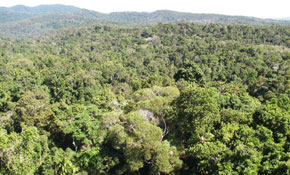
Friends of Print and Paper (FOPAP) launched its Earth Rescue plan earlier this year in response to Richard Branson’s Virgin Earth Challenge, which carries a prize fund of $25m for “a commercially viable design which results in the net removal of anthropogenic, atmospheric greenhouse gases so as to contribute materially to the stability of the Earth’s climate system”.
FOPAP is led by John Roche, managing director of UK-based print management software developer Haybrooke Associates.
Roche told ProPrint: “If you were to take a straw poll of people walking past your front door, people would say printing is responsible for [environmental damage].”
However, FOPAP has claimed that because forestry captures CO2 out of the atmosphere, increasing tree planting, paper manufacturing and printing would trap carbon and reduce climate change.
According to FOPAP, “if the demand for print were to treble over the next 100 years, global warming could be brought to a halt”.
Roche said: “Since established FOPAP, we have fought for a corner that is not at all popular – the central message is that the recycling of paper is not necessarily the great thing people believe it to be. It is a very difficult message for the consumer mind to embrace, because we have been told for so long that recycling is good.”
Earlier this year, FOPAP was contacted by Tim Mitchell from Western Australia’s Forest Products Commission, who expressed a personal view that the group’s approach could be put to good use on up to 21 million hectares of land in south western and south eastern Australia currently being considered for new forests and woodlands.
Mitchell said research had shown the “dark secret that we in our industry have known for a while now; that is the potential for global salvation to be built on the back of re-vegetation and increased use of wood fibre in all its forms”.
Mitchell added: “There is an opportunity for 4-6 million hectares of new forest and woodland in south western Australia and probably another 8-15 million hectares of new forest and woodland in the south east of Australia as well, which could constitute an Australian contribution to the plan.”
Roche said that one of the main criticisms he hears is that when paper products end up in landfill, they produce methane emissions.
However, he said that data from Fabiano Ximenes, a research officer specialising in lifecycle assessment at the NSW Department of Primary Industries, shows that paper does not create the kinds of damaging emissions many think.
Roche said: “He has proved conclusively that paper does not decay to anywhere near the extent previously thought. In ideal conditions it doesn’t decay at all, but even in saturated conditions, mixed with other types of waste, the decay is maximally 30%.
“Also, methane is now routinely collected at modern landfill. To say it escapes back into the atmosphere is not only alarmist, but completely untrue and therefore a classic ‘red herring’,” added Roche.
Comment below to have your say on this story.
If you have a news story or tip-off, get in touch at editorial@sprinter.com.au.
Sign up to the Sprinter newsletter
